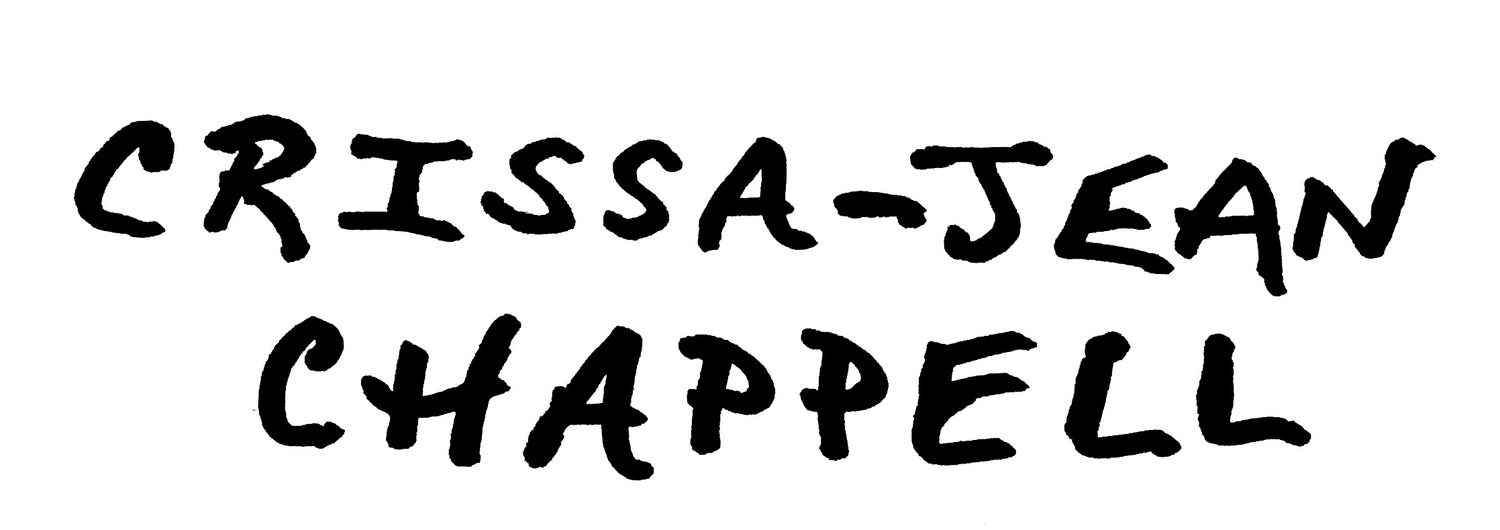As I pulled into my old high-school parking lot, I noticed the names spray painted into the concrete: T Mac, princess, and Steph (flanked by a heart and a sun and her name smeared with a wobbly red X). I wondered who had X-ed out Steph. Maybe her boyfriend? Or did the school mark the spot as a reminder: all spaces are equal?
I parked on the grass.
When Westminster asked me to give a presentation as an "alumna," my pulse jumped. Could I speak in the same auditorium where I used to chew Starburst and doodle elves on my Algebra II homework?
Yeah. I could handle that.
I sat on the edge of the stage, watching the handyman, Mr. Chuck, flip open the plastic seats. The same guy who always wore suspenders and patched up the classroom with duct tape when somebody (a boy who shall remain nameless) kicked a softball-sized hole under the blackboard.
"Hey, Mr. Chuck," said Patty, the person-in-charge. "Do you remember Crissa?"
He squinted. "Nope."
Patty turned and whispered, "He's always grumpy in the morning."
"Me too," I said.
In the past year, I've given my "book presentation" talk at schools all over the country, but never at my own school. And never to a crowd of teachers. They sat still in the bleachers, raised their hands, and asked questions like, "How do you get kids interested in learning?"
I looked into the rows of faces and saw Mr. Nolander, my psychology teacher who quizzed me about medieval humors and personality types (No surprise. My answers came up "melancholy").
"You never got angry when I doodled in class," I said, keeping my gaze on Mr. Nolander, who beamed back a grin.
After the presentation, he told me, "I still have your short story about King Solomon's cat."
I chatted with my French teacher, Mrs. Whiting ("Didn't your hair used to be really long?" she asked), my History teacher, Mrs. Springer ("FDR had no plan," she would chant before a test) and, of course, my English teacher, Mrs. Cameron, who put up with my novels-in-progress (complete with laminated covers and paper-clipped spines).
I finally had a chance to say, "Thank you."
Patty was a graceful host, dancing on the stage, turning perfect pirouettes. "I'm always moving," she said, touching my arm. We walked across the campus to the art room, my sanctuary. The room was new but it smelled the same: acrylic paint and butcher paper.
Last week, I played the alumna role at the University of Miami. My creative writing prof, Goran, asked me to visit his undergraduate workshop. We sat in a semi-circle of desks and gossiped about publishing. One kid wanted to know, "Could I set up an appointment to meet with an agent?" Goran strutted to the front of the room and jabbed his finger into the air. (I remembered the time he drew a pair of circles on the board. "This is you," he scribbled next to small circle. Beside the large one, he wrote, "This is the world.")
Goran was talking about the teen genre, how it doesn't really exist. "You wrote a book about a fifteen-year-old," he said. "But it's not just for teenagers."
Recently, at a holiday party, I overheard someone whispering behind me. They pointed and said, "She's a writer. But she writes for teens." The party-whisperer went on: "I never read those books when I was in high-school."
I wonder what she did read.
In Goran's classroom, I noticed a girl in a Friends With You t-shirt flipping through Paper Towns. She shrugged. "It's good."
On the way out, I walked across the parking lot. The spaces were mostly empty, a rare sight, like a NASA photograph of the sun's blistered surface. No names painted in the concrete. Just empty spaces, waiting to be filled. I sat in my car and listened to the crackly voices on public radio. They sounded like people I used to know, but couldn't remember.





